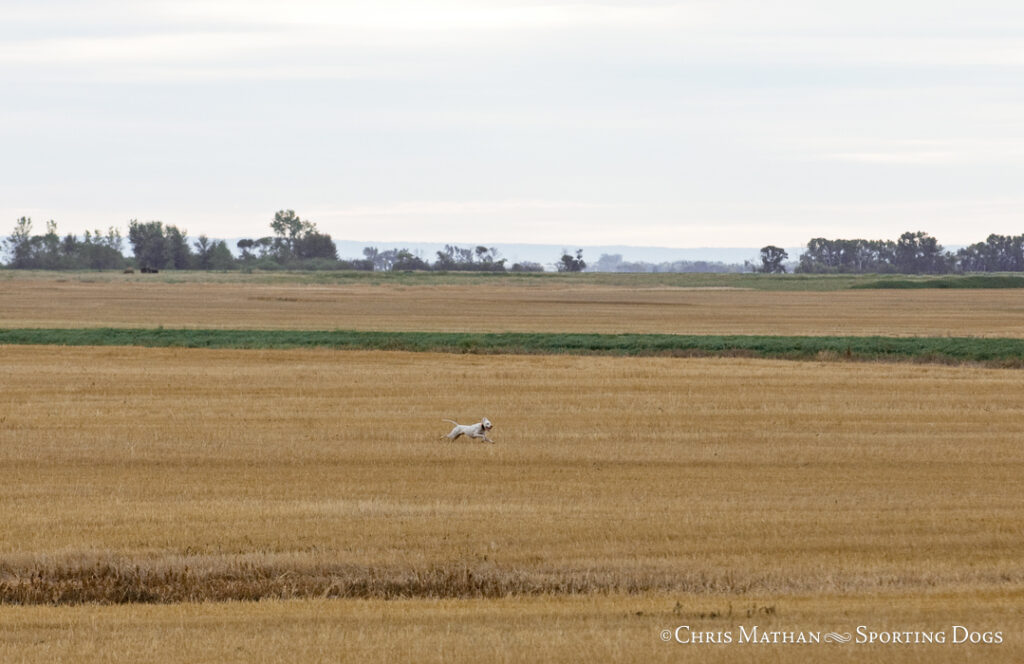Willie Green and Alvin Roop had been rivals throughout their careers. Home based a hundred miles apart east and west of the Chattahoochee opposite Columbus, less than that in Manitoba in summer, they competed as handlers on the all-age pointing dog circuit. The year was 1963, and Willie and Alvin were forty years old.
Willie’s scout was Booty Blevins, Alvin’s was Sam Williams. Both were black men, ages about the same. They loved their jobs and were good at them.
Willie had for a half dozen years won his share with a pointer named Whip, but Whip was retired now, living with his adoring owner Ben Cubbage, a Birmingham banker. Willie had no descendants of Whip in his string, much to his regret. But Alvin had a coming derby sired by Whip that had won the Dixie Puppy Classic stake, and Willie and Booty were plotting to acquire him. His name was Whipper Snapper, call name Snap. Snap was owned by Clyde Bradshaw, an Atlanta banker and business competitor of Ben Cubbage.
Willie and Booty had observed Snap in all his outings since a green pup, most recently in the derby stakes on the Canadian prairies. Snap had won one, come second in another. In that one they had seen what they had been looking for, a clear signal now was the time to try to buy Snap.
Ben Cubbage had given Willie a budget of $2,000 to buy Snap. Willie was determined to buy him for less and based on the intelligence gathered by Booty, he was pretty sure he could, if he played his cards right.
He and Booty thought the opportunity might come at the Canadian-U.S. Border crossing at Antler. Booty learned from Sam the day and time Alvin planned to cross back to North Dakota, and the Willie-Booty team pulled in behind them at Antler to wait for the Mounties’ inspection at the crossing point.
The Mounties had shut down operations to eat lunch, so the trainer-handler teams broke out their sardines, crackers and cheese and sat together under a shade tree.
Soon Willie began his spiel on why Alvin should sell him Snap.
“Booty saw Snap blink them chickens, just like ole Whip used to if his handler or scout wasn’t near when he found game. Was a hard hole to hide, I’ll tell you, never fixed it.”
It was true Whip had as a derby briefly become a blinker after the pressure to break him steady to wing and shot was applied but his team had come up with a cure before Whip’s first all-age year began. Their hope now was to get blinking Snap on their string and cure him the same way.
Before the lunch break ended, Willie had bought Snap for $600, thereby saving $1400 of the $2000 budget Ben Cubbage had authorized for the purchase of Snap. And Willie would keep that $1400, except for $140 of it going to Booty, the traditional scout’s part of a purse.
As they suspected, Alvin and Sam had been struggling all summer to get Snap reliably steady and the pressure had rendered him a confirmed blinker when his handler or scout was not near when he smelled birds. They were ready to wash their hands of Snap and had apparently convinced Clyde Bradshaw that was the right decision. (In fact, Clyde had authorized Snap’s sale for $400, so Alvin would be keeping $200 of the cash Willie had given him for Snap).
Back in Alabama, Willie and Booty did not enter Snap in fall derby stakes. When they worked him they let him break shot at will. And when it turned cold enough to numb rattlers in South Texas, they scheduled a week on the King Ranch for Ben Cubbage and a couple of pals to shoot wild birds over Snap’s points, the same technique they had used to cure Whip of blinking. It worked on Snap, and when the Continental Derby Championship commenced the third Monday in January, Snap was on the draw sheet, not a blinker and steady to wing and shot.
Author’s Note: Dedicated to Ed Mack Farrior and Little Eva, a blinker Ed Mack cured.

I love your stories, please keep them coming..